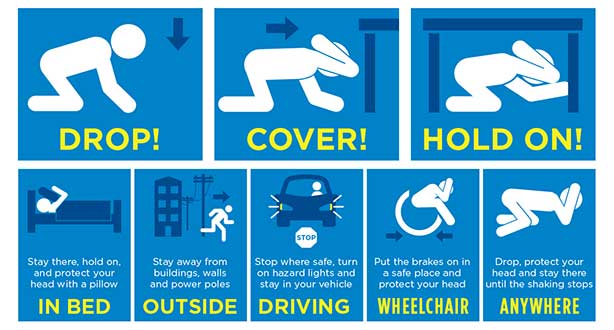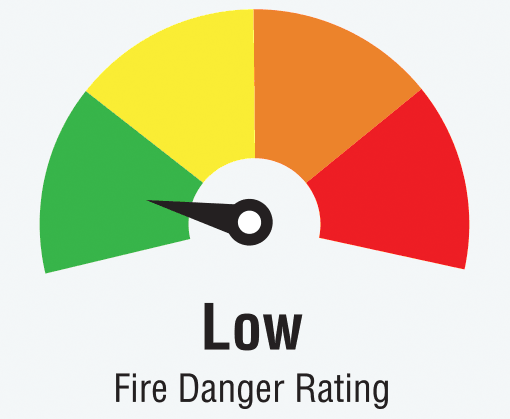Earthquakes may cause a number of phenomena, including ground motion, surface faulting, ground failure, and liquefaction.
According to the National Building Code of Canada (NBBC) 1990, the Resort Municipality of Whistler is located within Seismic Zone four, meaning Whistler is considered at high-risk from earthquake damage. Fortunately, the majority of the structures in Whistler are wood-frame and reinforced concrete, which are considered reasonably stable buildings in an earthquake due to the flexibility of these materials.
Be prepared – Before an Earthquake
Keep your family safe by preparing for earthquakes in advance.
- Develop a household emergency plan.
- Put together a grab-and-go emergency kit.
- Know what to do in an earthquake to protect yourself. When you feel the ground shake, immediately Drop, Cover, and Hold On.
- Prepare your home for earthquakes.
- Know where to get emergency information and updates. Stay informed.
Earthquake Readiness
Drop, Cover, and Hold On
When you feel the ground shake, immediately Drop, Cover and Hold On. These three simple steps have saved lives in earthquake zones around the world.

Drop to your hands and knees. This position prevents you from falling, but allows you to move if necessary. If you’re inside, stay inside. Don’t run outdoors or to other rooms. Most injuries occur when people are knocked over or struck by flying debris.
Cover your head and neck with your arm and take shelter under a sturdy piece of furniture. If there is no shelter nearby, crawl to the nearest interior corner or wall while continuing to protect your head and neck.
Hold On to your shelter, covering your head and neck until the shaking stops. Count to 60 before getting up, giving unanchored objects time to settle.
Move cautiously, looking for hazards from above and below. Check gas, water and electrical lines. Be aware that there may be other hazards caused by an earthquake, including fire, landslides and liquefaction.
Home Earthquake Preparedness Checklist
Severe shaking can topple large furniture and appliances, toss heavy items from walls and shelves, and throw open cupboards. To prevent these things from happening:
- Secure tall, free-standing furniture, such as bookcases, cabinets and shelving to wall studs using “L” brackets, corner brackets or anodized aluminum moulding.
- Move framed pictures and mirrors away from beds, couches and chairs.
- Secure cabinet doors with push or pull latches.
- Use strong strapping and ratchets or other connectors to secure refrigerators, freezers, washers and dryers.
- Anchor water heaters snugly to the wall with straps. If necessary, contract a licensed gas fitter to install a flexible gas line.
Resources
- PreparedBC Earthquake Preparedness information
- PreparedBC Earthquake and Tsunami Smart Manual

